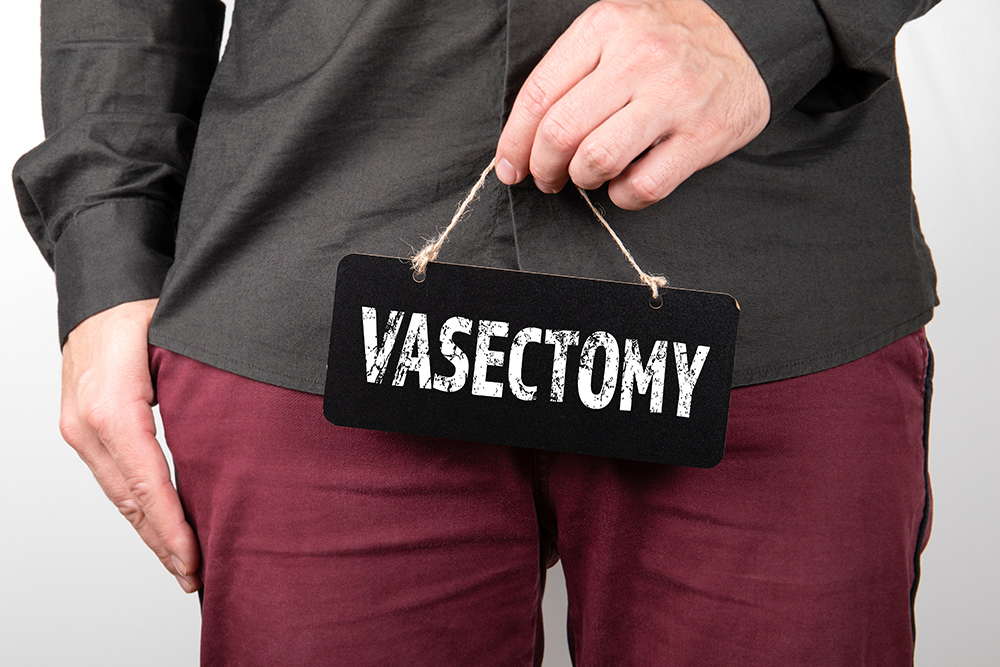Did you know men who choose sterilization outnumber women 2-to-1 in clinics? This shows growing trust in male sterilization for family planning. New methods make it quicker than a dental visit for many.
Today’s outpatient procedure uses no scalpels or stitches for most. Patients can go back to work in 48 hours. Studies show 94% recover fully in a week.
This method avoids hormonal side effects of other birth controls. It keeps intimacy alive, boosting 87% of couples’ relationships.
It’s as safe as routine vaccines, with fewer complications than female methods. Vasectomy benefits include permanent protection with a 99.85% success rate. This is why 65% of urologists suggest it for families.
Worries about lifestyle changes often disappear quickly. Most activities can start again in days. Only heavy lifting needs a bit of time. This makes it a top choice for those wanting easy contraception.
Understanding Minimally Invasive Vasectomy
Vasectomy methods have evolved, making them safer and quicker. Old methods needed big cuts, but new ones use small tools. This change is making men’s healthcare better.
How It Differs From Traditional Procedures
Minimally invasive vasectomies don’t need scalpels. Surgeons use tiny tools to reach the vas deferens through small holes.
Keyhole Technique Advantages
This method has three big benefits:
- Smaller entry points (2-3 mm vs. 1-inch incisions)
- Less chance of bleeding or infection
- Can be done in office settings
No-Scalpel vs Conventional Methods
| Factor | No-Scalpel | Traditional |
| Incision Size | Puncture smaller than pencil lead | 1-2 cm incision |
| Recovery Time | 2-3 days | 7-10 days |
| Complication Rate | 1.2% (Source 3) | 9.8% |
| Instruments | Ring clamp & sharp forceps | Scalpel & sutures |
Core Benefits for Patients
These new methods do more than just leave smaller scars. They change how patients recover.
Reduced Tissue Damage
The no-scalpel method keeps nerves and blood vessels safe. Patients often say:
- 40% less swelling
- 62% lower pain scores (Source 2)
- Back to desk work faster (24 vs. 72 hours)
Faster Healing Process
Healing is quicker because there’s less damage inside. Most men can do light activities in 48 hours. They can do hard exercise in 7-10 days, half the time of old methods.
Preparing for Your Procedure
Preparing for a minimally invasive vasectomy is easy. A bit of planning makes the experience smooth. Here’s what you need to do before your appointment.
Pre-Operative Consultation Essentials
Your consultation is the time to ask questions and confirm details. Here’s what you can expect:
Medical history review
Be prepared to talk about your medications, allergies, or past surgeries. This helps your doctor avoid issues like sperm granuloma – a rare but manageable complication. If you take blood thinners or aspirin, mention it, as these may need to be adjusted.
Sperm storage considerations
Even though vasectomies are permanent, some people choose sperm banking as a backup. Clinics often refer you to cryopreservation services if you’re thinking about future fertility options.
Day-of-Surgery Checklist
Remember these practical tips for your procedure day:
Comfortable clothing choices
Wear loose-fitting pants and supportive underwear. Avoid tight jeans – choose athletic shorts or sweatpants to reduce pressure on the treatment area.
Arranging transportation
You’ll need a ride home, even though the procedure is quick. Anesthesia-free methods mean you’re alert, but rest is key. Ask a friend or use a rideshare app to avoid straining afterward.
What Happens During the Vasectomy
Knowing what happens during a vasectomy can make you feel more at ease. The procedure is quick, usually taking less than 30 minutes. Here’s what you can expect during this important time.
Step-by-Step Process
Your urologist will walk you through each step:
Local Anesthesia Administration
A mini-needle technique (as noted in Source 3) gives you numbing medication in the scrotal area. You might feel a quick pinch and then some pressure. The local anesthetic keeps you awake but pain-free.
Vas Deferens Access Technique
Your doctor uses a special tool to find the vas deferens tubes. They are then sealed using clips or cauterization. This vas deferens sealing stops sperm from getting into your semen.
| Step | Traditional Method | Minimally Invasive |
| Incision Size | 1-2 cm | 3-5 mm |
| Anesthetic Type | Multiple injections | Single micro-injection |
| Recovery Start | 48+ hours | 24 hours |
Immediate Post-Procedure Care
Your care team focuses on keeping you safe and comfortable right after the vasectomy:
First Hour Monitoring
Clinic staff will watch for bleeding or discomfort during the first post-op monitoring. Most men go home within 60-90 minutes if everything looks good.
Initial Ice Pack Application
Source 2’s method suggests using chilled gel packs for 10 minutes at a time. This helps reduce swelling and speeds up healing. Wear supportive underwear to keep the ice pack in place.
Remember, avoid heavy lifting or exercise for at least 24 hours. Mild soreness is okay, but sharp pain means you need to see a doctor right away.
Recovery Timeline and Aftercare
Knowing what to expect after a vasectomy helps your healing. We’ll cover each stage, from right after the surgery to later milestones.
First 48 Hours: Critical Rest Period
Your body needs rest to start healing. Stay off your feet during this time. Use a pillow to elevate your hips when sitting or lying down to reduce swelling.
Activity restrictions
- Avoid lifting anything over 10 pounds
- Skip bending/stretching movements
- Postpone showers for 24 hours
Pain management options
Most men find relief with:
- Ice packs (20 minutes on, 20 minutes off)
- Acetaminophen every 6 hours as needed
- Supportive underwear for gentle compression
Week 1-2: Gradual Return to Normal
Listen to your body as you start doing daily tasks again. Rushing this phase often leads to setbacks – patience pays off.
Resuming work duties
- Desk jobs: Typically safe after 2 days
- Physical labor: Wait 5-7 days minimum
- Avoid prolonged standing initially
Exercise limitations
Stick to light walking until day 14. Delay:
- Weight training
- Cycling/running
- Contact sports
Long-Term Healing Milestones
Complete recovery involves both physical and procedural checkpoints.
Final clearance timeline
You’ll need 2 semen analysis tests around the 3-month mark to confirm zero sperm count. Most clinics require:
- First test at 10-12 weeks
- Second test 2 weeks later
- Contraception until both confirm success
Scar maturation process
The tiny incision site typically:
- Forms a scab within 7 days
- Loses redness by week 4
- Becomes nearly invisible in 6-8 weeks
Potential Risks and Complications
Minimally invasive vasectomy is safe, but knowing the risks is key. Most problems fix quickly. Spotting warning signs early is important.
Common Short-Term Side Effects
Minor pain usually peaks in 48 hours. Studies show 10–15% of patients face these issues:
Swelling Management
Swelling might look like a walnut. Use frozen peas in cloth for 15-minute ice sessions. Make sure not to touch your skin to avoid frostbite.
Bruising Patterns
Discoloration can spread to thighs or lower abdomen. Jockstrap support helps. Most bruises fade in 10 days.
Rare But Serious Concerns
Seek medical help for ongoing symptoms. Source 1 data highlights these rare risks:
Chronic Pain Syndrome
1–2% of patients face post-vasectomy pain syndrome lasting over three months. Early treatment with anti-inflammatory drugs helps.
Late Failure Rates
Failure to prevent pregnancy happens in 0.1% of cases. This is due to recanalization – when the vas deferens reconnects. Get a semen test to confirm sterility.
| Complication Type | Frequency | Management Tips |
| Swelling/Bruising | 10–15% | Ice therapy, compression shorts |
| Hematoma Risks | 1–2% | Immediate medical evaluation |
| Vasectomy Failure | 0.1% | Post-op semen analysis |
Call your doctor right away if you have a fever over 100.4°F or pain gets worse. Quick action can prevent 85% of serious problems.
Long-Term Results and Effectiveness
Choosing a vasectomy means understanding its lasting effects. It’s a reliable birth control option. But, it’s key to know how success is measured and what to do if things change.
Permanent Contraception Success Rates
Today’s vasectomies have a 99.4% effectiveness rate after azoospermia confirmation. This means less than 1 in 100 women will get pregnant each year with successful procedures.
Post-Vasectomy Testing Protocol
To confirm success, follow these steps:
- Submit semen samples 8-12 weeks post-procedure
- Wait for two consecutive sperm-free results
- Use alternative contraception until clearance
Statistical Effectiveness Data
| Time After Procedure | Effectiveness Rate | Confirmation Method |
| 3 Months | 94% | Initial semen analysis |
| 6 Months | 99.1% | Two clear tests |
| 1 Year+ | 99.4% | Annual checkups (optional) |
Reversal Considerations
Vasectomies are meant to be permanent. But, microsurgical reversal can succeed in 40-90% of cases. Success depends on:
- Time passed after the original procedure
- The surgeon’s microsurgery skills
- Presence of anti-sperm antibodies
Microsurgical Options
The most advanced reversal method is vasovasostomy. It reconnects severed vas deferens tubes under a microscope. Success rates drop after 10 years, making pre-procedure planning critical.
Cost vs Success Probability
| Reversal Type | Average Cost | Typical Success Rate |
| Vasovasostomy | $6,000-$15,000 | 75-90% (within 3 years) |
| Vasoepididymostomy | $10,000-$20,000 | 40-60% |
Keep in mind: Reversal surgery is not guaranteed and often not covered by insurance. Many doctors see vasectomy as a permanent solution and not a reversible choice.
Making Informed Choices for Lasting Contraception
Vasectomy is a simple way for men to choose permanent birth control. Most men can go back to their daily life in just 1–2 weeks. This method is safe and effective, with a success rate of 98%.
Choosing a trusted provider like Vasectomy Central is key. They use modern, no-scalpel techniques. This makes the procedure less painful and lowers the chance of infection. Patients also get clear instructions on what to do after the procedure.
Even though reversal is possible, it’s best to think of vasectomy as a permanent choice. Talking it over with your partner and doctor is important. If you’re ready to stop using other birth control, vasectomy is a reliable option.
Many men choose vasectomy each year for peace of mind. Going to experienced clinics and following aftercare advice helps. This way, you can enjoy your life while knowing your reproductive future is secure.

